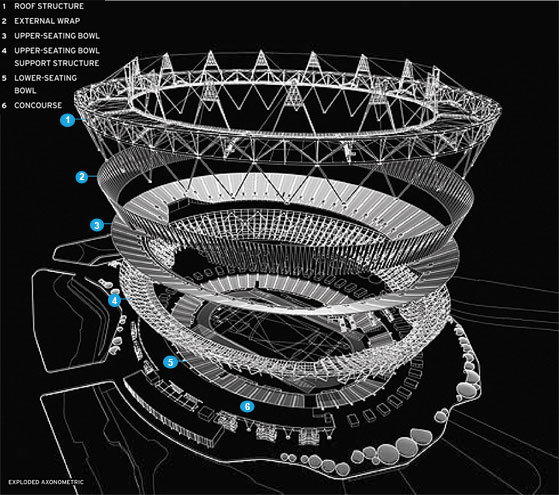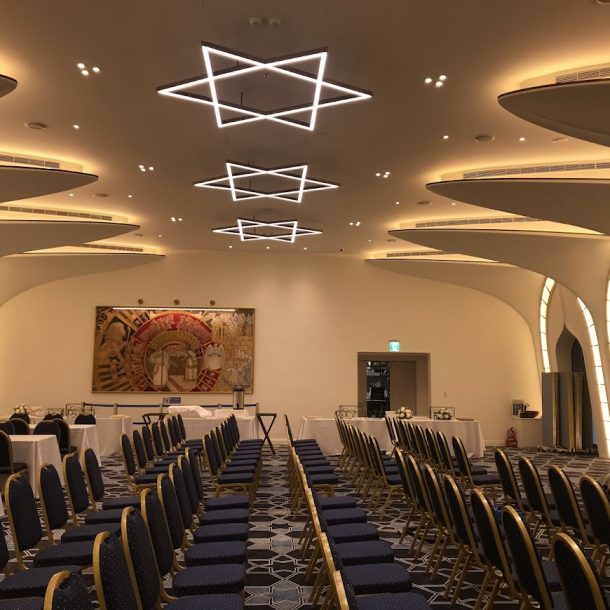
My name is Chao Jung Chen. (CC2856) ,I am interested in Session 9 Maximalism: Programmatic Dutchness
Reason:
I think an architecture model is neither a sculpture nor a painting – it is merely a tool to examine the design and get some degree of understanding of how the actual architecture will look. Also, I am certain convinced that Architecture can be any effort about the real life as form making space in light and shadow in time. Such delineates perhaps a more important site than the site as a plot of land in the city. This form making space in light and shadow in time can have myriad relationships in location to each other via value, hue, and quality. Time can make form. Space can make time. Light can make space. Shadow can make form. And so on.
In short, theory is the province of ideas that precedes action, however, in architecture; theory is never divorced from practice. Compare to theory, architect’s manifesto is a more loosely discursive form, but full of her/his passion and desire. Theory, manifesto and practice are inseparable. On the one hand, architects cannot physically construct the buildings they design without “theory” to guide them, for example, traditional conventions, experimental structural concepts, ideological or aesthetical judgments. On the other hand, “manifesto” relies ultimately on practice to test its hypotheses and assumptions to become theory.
我認為建築模型既不是雕塑,也不是繪畫——它僅僅是一種工具,用於檢視設計,並在某種程度上理解實際建築的樣貌。此外,我堅信建築可以是關於現實生活的任何努力,作為在光與影、時間中的形式創造空間。這樣的界定或許比城市中一塊土地的地點更為重要。
這種在光與影、時間中的形式創造空間,可以透過價值、色調和品質,在位置上彼此建立無數的關係。時間可以創造形式,空間可以創造時間,光可以創造空間,影可以創造形式,等等。
簡而言之,理論是行動之前的思想領域,然而,在建築中,理論從未與實踐分離。與理論相比,建築師的宣言是一種更為鬆散的論述形式,但充滿了他/她的熱情和渴望。理論、宣言和實踐是不可分割的。
一方面,建築師在沒有理論指導的情況下,無法實際建造他們設計的建築,例如,傳統慣例、實驗性結構概念、意識形態或美學判斷。另一方面,宣言最終依賴實踐來檢驗其假設和前提,從而成為理論。
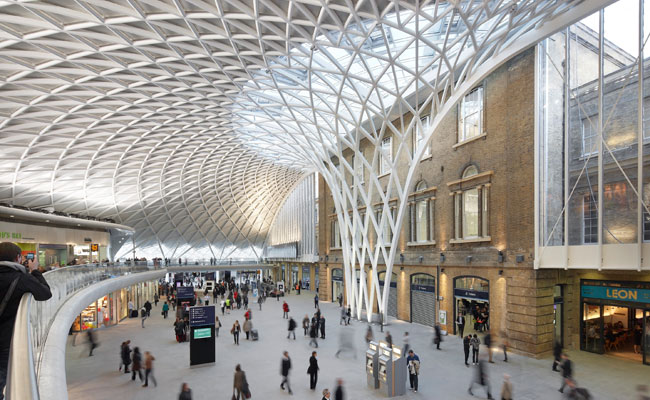
Spring 2008
Seminar Wednesday 11 am – 1 pm
Architecture: The Contemporary (from 1968 to the present)
Professor Bernard Tschumi
Should architecture be judged based on its history? Does contemporary practice grow out of a genealogy of forms? Or, on the contrary, do architects develop ideas and concepts embedded in their culture and time?
If architecture is a practice of concepts and ideas, this course suggests that practice may precede theory as often as theory precedes practice.
Covering the period from 1968 to the present, the seminar will begin with Italian Radical Architecture of the late sixties and early seventies, together with its counterpoint in Rational Architecture. We will end with an examination of the yet unbuilt work of today’s newest architectural practices in relation to issues of post-criticality and utopian realism.
While the course in not yet intended to be a comprehensive survey, it will analyze major ideas, ideologies, and buildings of the period.
Session 1 From the Fun Palace to No-Stop Ctiy
Session 2 Constants and Variables, Frozen Typologies: Neorationalism
Session 3 Disciplinary Autonomy: The “Whites,” Late, Corporate Modernism
Session 4 The Grays and Postmodernism
Session 5 Critical Regionalism, Phenomenology, Contextualism, Realism
Session 6 From Deconstruction to the Bilbao Effect
Session 7 Ideological and Ecological Envelopes
Session 8 Minimalism: Archaic Modern Swissness
Session 9 Maximalism: Programmatic Dutchness
Session 10 From Postcriticality to Utopian Realism
Ideas and Concepts: sequence / superposition / juxtaposition / in between / activator / vector / circuits / bands / fragments / deformed / double envelope / surface / old and new / transprograming / crossprograming / affect / tactical / indifference / reciprocity / conflict / contextualizing concept / conceptualizing context / diagram / difference / digital / experience / field / frame / real fake-fake real / hybrid / identity / branding / indeterminacy / local-global / manifesto / mapping / margin / memory / montage / multiple / mutation / non linear / normative / particles / pattern / performance / praxis / sampling / serial / surface / trace / type / urban /
zero degree
Students will be required to make in-class presentations and write a term paper. Class sessions will be focused around presentations and discussions of weekly readings and occasional contributions by invited guests.
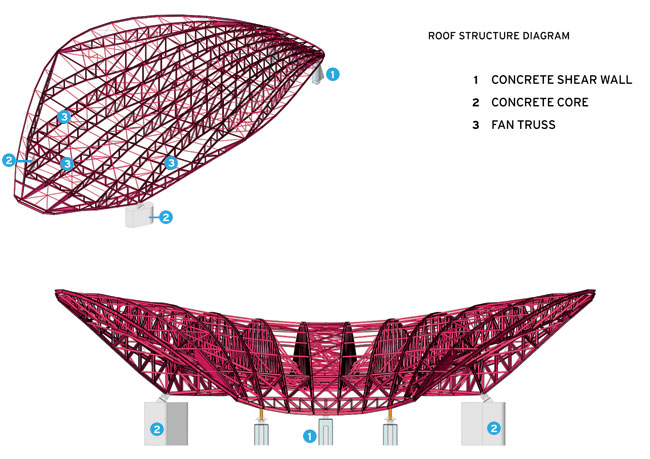
Spring 2008 Seminar
Architecture: The Contemporary (Ideas and Concepts from 1968 to the present)
Professor Bernard Tschumi
Session 1 From the Fun Palace to No-Stop City
Context
1966 Cultural Revolution in China
1968 Student protests in Europe and America
1957-75 Vietnam War
Primary Texts
Price, Cedric. “Non-Plan.” In Architectural Design 39 (May 1969): 269–73.
Friedman, Yona. “Manifesto: L’Architecture Mobile” (1956) (reprinted in Sabine Lebesque and Helene Fentener van Vlissingen, ed. Yona Friedman: Structures Servicing the Unpredictable [Rotterdam: NAi Publishers, 1999]).
Constant, “New Babylon: Outline of a Culture” (1965) (reprinted in Mark Wigley, Constant’s New Babylon: The Hyper-Architecture of Desire [Rotterdam: 010 Publishers, 1998]).
Strike Committee, Ecole des Beaux-Arts, “Motion of May 15” (1968) (reprinted in Architecture Culture 1943¬–1968).
Goldberger, Paul. “Architecture at Columbia: Legacies of a Radical Era.” On the Rise: Architecture and Design in a Postmodern Age (New York: Penguin Boosk 1983).
“Chronology.” In Touchstone 2 (December 1967): 3–5.
Tafuri, Manfredo. “Introduction.” Theories and History of Architecture (1968) ) (reprinted in Architecture Culture 1943¬–1968).
Superstudio, “Twelve Cautionary Tales for Christmas,” Architectural Design (December 1971).
Superstudio, “The Continuous Monument: an Architectural Model for Total Urbanization.” In Superstudio: Life without Objects, ed. Peter Lang, William Menking (Milan: Skira, 2003).
Branzi, Andrea. “The Fluid Metropolis.” In Andrea Branzi: The Complete Works (Milan: Passigli Progetti, 1992).
Ambasz, Emilio, ed. “Counterdesign as Postulation.” In Italy: The New Domestic Landscape: Achievements and Problems of Italian Design. New York: MoMA, 1972.
Celant, Germano. “Radical Architecture.” In Italy: The New Domestic Landscape: Achievements and Problems of Italian Design. New York: MoMA, 1972.
Feuerstein, Gunther. “Inspirations-Influence-Parallels: Visionary Architecture in Austria in the Sixties, and Seventies.” In Architecture Radicale (Orléans: Conception Éditoriale, HYX, 2001).
Projects
Cedric Price, Fun Palace (1959–1961)
Cedric Price, Potteries Thinkbelt, Straffordshire, England (1964¬–66)
Guy Debord and Asger Jorn, The Naked City (1957)
Yona Friedman, Spatial City (1958–59)
Archigram, Walking City (1962–64)
Archigram, Plug-in City (1964)
Constant, New Babylon (1956–74)
Renzo Piano, Richard Rojas, Pompidou Center (1971)
Superstudio, Continuous Monument (1969–71)
Superstudio, Twelve Ideal Cities (1972)
Archizoom, No-Stop City (1968–70)
Archizoom, furniture designs (1967–69)

以下是為了能夠滿足段落所需的長度而定義的無意義內文,請自行參酌編排。
Session 2 Constants and Variables, Frozen Typologies: Neorationalists
Primary Texts
Rossi, Aldo. Introduction and Chapter 1 of The Architecture of the City (Cambridge, Mass: MIT Press, 1982).
Moneo, Rafael. “The Idea of Architecture and the Modena Cemetery.” Oppositions 5 (Summer 1976).
Vidler, Anthony. “The Third Typology” (1978). (reprinted in Architecture Theory since 1968)
Scolari, Massimo. “The New Architecture and the Avant-Garde” (1973). (reprinted in Architecture Theory since 1968)
Further Reading
Krier, Leon. “The Reconstruction of the City.” In Rational Architecture: The Reconstruction of the European City (Brussels: Editions des Archives d’architecture moderne, 1978).
Rykwert, Joseph. “XV Triennale,” Domus 530 (1974).
Projects
Aldo Rossi, Cemetery of San Cataldo, Modena, Italy (1971-84)
Aldo Rossi, Teatro del Mondo (1979)
Aldo Rossi, Housing block, Gallaratese, Italy (1969-73)
Giorgio Grassi, Student residences, Chieti, Italy (1976)
Guido Canella, Vittorio Gregotti, Franco Albini, Aymonino, Giorgio Grassi
Events
“Rational Architecture,” Milan Triennale (1973)
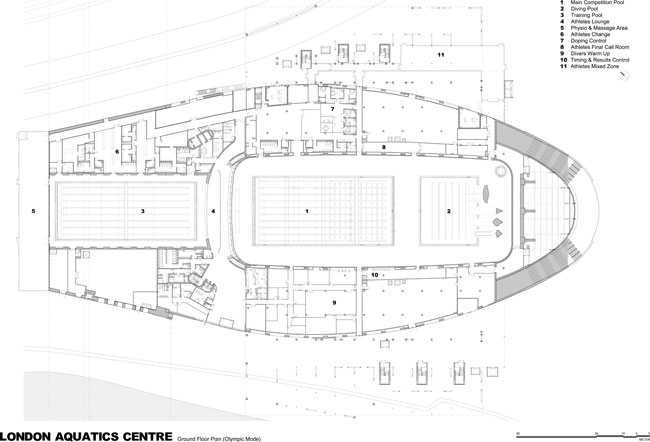
Session 3 Disciplinary Autonomy: The “Whites,” Late Modernism, Corporate Modernism
Primary Texts
Eisenman, Peter. “Aspects of Modernism: Masion Dom-ino and the Self-Referential Sign.” In Oppositions Reader.
Eisenman, Peter. “Post-Functionalism.” Oppositions 6 (1976). (reprinted in Peter Eisenman, Eisenman Inside Out: Selected Writings 1963–1988)
Rowe, Colin. Introduction to Five Architects. (reprinted in Architecture Theory since 1968)
+ find a good article on corporate modernism [Reinhold’s article “Atrocities” here or in Ideological Envelopes?]
Further Reading
Deamer, Peggy. “Structuring Surfaces: The Legacy of the Whites.” Perspecta 32 (2001): 90–99.
Tafuri, Manfredo. “’European Graffiti.’ Five x Five=Twenty-five.” Oppositions 5 (Summer 1976).
“Five on Five.” In Architectural Forum 138, no. 4 (May 1973): 46-57.
“White and Gray: Eleven Modern American Architects.” Architecture and Urbanism 52 (April 1975).
Projects
Peter Eisenman, House VI (1972)
Peter Eisenman, House X (1975–78)
Michael Graves, Hanselmann House, Fort Wayne, Indiana (1967)
Michael Graves, Snyderman House, Fort Wayne, Indiana (1972)
Charles Gwathmey, Gwathmey Residence and Studio
John Hejduk, Wall House (1968-74)
John Hejduk, Wall House 2, Ridgefield, Connecticut (1973–76)
Richard Meier, Smith House, Darien, Connecticut (1965-67)
Richard Meier, High Museum of Art (1980¬–83)
Minoru Yamasaki, World Trade Center, New York (1966–77)
SOM, John Hancock Center, Chicago, Illinois (1965–70)
SOM, Sears Tower, Chicago, Illinois (1974¬–76)
I. M. Pei, John Hancock Tower, Boston, Massachusetts (1976)
I. M. Pei, National Gallery of Art—East Building, Washington, DC (1978)
Events
CASE Meeting at MoMA (1969)
“Five Architects” exhibition at MoMA (1969)
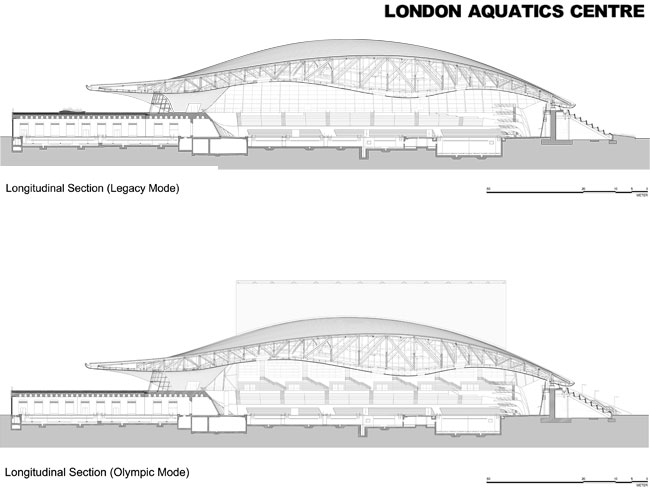
Session 4 The Grays and Postmodernism
Primary Texts
Brown. Denise Scott and Robert Venturi. “A Significance for A&P Parking Lots or Learning from Las Vegas” (1968) (reprinted in Theorizing a New Agenda for Architecture)
Brown. Denise Scott and Robert Venturi. “On Ducks and Decoration” (1968) (reprinted in Architecture Culture 1943–1968).
Stern, Robert. “Gray Architecture as Post-Modernism, or, Up and Down from Orthodoxy,” L’Architecture d’Aujourd’hui 186 (1976) (reprinted in Architecture Theory since 1968).
Jameson, Fredric. Excerpts from “The Cultural Logic of Late Capitalism.” In Postmodernism, or, The Cultural Logic of Late Capitalism (Durham, NC: Duke University Press, 1991).
Moore, Charles. “You Have to Pay for the Public Life,” Perspecta 9/10 (1965), 57–87.
Goldberger, Paul. On the Rise: Architecture and Design in a Postmodern Age (New York: Penguin Books, 1983).
Jencks, Charles. Diagrams from What is Post-Modernism? (New York: St. Martin’s Press, 1986) and Architecture 2000 and Beyond (Chichester, England: Wiley-Academy, 2000).
Further Reading
Graves, Michael. “A Case for Figurative Architecture” (1982).
Krier, Leon. “Building and Architecture” (1984).
Linder, Mark. “Entropy Colorized: The Gray Decades, 1966¬–96.” ANY 16 (1996), 45–49.
Venturi, Robert, Denise Scott Brown, and Steve Izenour, Learning from Las Vegas (1972)
Venturi, Robert. Complexity and Contradiction in Architecture (1966).
Charter of the New Urbanism (1996)
Jencks, Charles. “The Los Angeles Silvers: Tim Vreeland, Anthony Lumsden, Frank Dimster, Eugene Kupper, Cesar Pelli, Paul Kennon.” Architecture and Urbanism 70 (1976).
Habermas, Jurgen. “Modernism and Postmodernism in Architecture” (1989). (reprinted in Architecture Theory since 1968)
Projects
Leon Krier, Housing at La Villette (1976)
Leon Krier, Lycée Classique Project, Echternach, Luxembourg (1970)
Leon Krier, Triangular Civic Building Project, Rome, Italy (1977)
Robert Venturi, Vanna Venturi House (1963)
Charles Moore, Piazza d’Italia, New Orleans (1976–69)
James Stirling, Neue Staatsgalerie, Stuttgart, Germany (1977–82)
Hans Hollein, Austrian Travel Bureau, Vienna, Austria (1978)
Michael Graves, Portland Building, Portland, Oregon (1982)
Michael Graves, Fargo-Moorhead Cultural Center, Fargo, North Dakota, and Moorhead, Minnesota (1977–78)
John Portman, Bonaventure Hotel (1976)
John Portman, Hyatt Regency Hotel, Atlanta, Georgia (1964¬–67)
Rob Krier, Ritterstrasse Apartments, Berlin-Kreuzberg (1977–81).
Philip Johnson, AT&T Headquarters, New York (1978–84)
Rob Krier, Duany & Plater-Zyberg, Seaside, Florida (1984–91)
Kohn Pedersen Fox, Procter & Gamble Headquarters, Cincinnati, Ohio (1985)
Events
“The Presence of the Past,” Venice Biennale (1980)
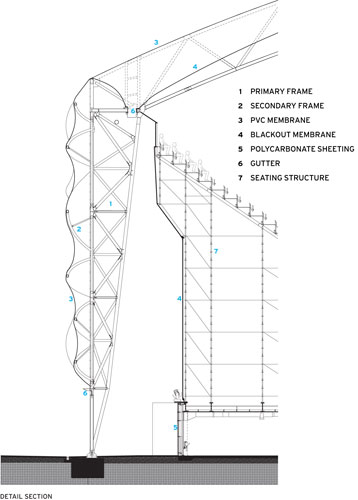
Session 5 Critical Regionalism, Contextualism, and Phenomenology
Primary Texts
Frampton, Kenneth. “Towards a Critical Regionalism: Six Points for an Architecture of Resistance.” In The Anti-Aesthetic: Essays on Postmodern Culture. Ed. Hal Foster (Seattle, WA: Bay Press, 1983).
Rowe, Colin and Fred Koetter. Collage City (1973) (excerpts in Architecture Theory since 1968).
Alberto Pérez-Gómez, “The Architecture of Steven Holl: In Search of a Poetry of Specifics.” El Croquis 93 (1999).
Norberg-Schulz, Christian. “The Phenomenon of Place.” Architecture Association Quarterly 8, no. 4 (1976). (reprinted in Theorizing a New Agenda for Architecture)
Vidler, Anthony. “Introduction” and “Architecture Dismembered.” In The Architectural Uncanny (Cambridge: MIT Press, 1992).
Lefaivre, Liane and Alexander Tzonis, “Why Critical Regionalism Today?” Architecture + Urbanism (May 1990) (reprinted in Theorizing a New Agenda for Architecture)
Further Reading
Ockman, Joan .“The Poetics of Space [by] Gaston Bachelard,” Harvard Design Magazine (Fall 1998), 79-80.
Norberg-Schulz, Christian. Genius Loci: Towards a Phenomenology of Architecture (New York: Rizzoli, 1980).
Lefaivre, Liane and Alexander Tzonis, eds. Tropical Architecture: Critical Regionalism in the Age of Globalization (London: Academy Press, 2001).
Jameson, Fredric. “The Constraints of Postmodernism.” In The Seeds of Time (New York: Columbia University Press, 1994).
Projects
Alvaro Siza, Leca da Palmeira Swimming Pool (1966)
Alvaro Siza, Beires House, Povoa do Varzim (1973–77)
Alvaro Siza, Bouca Resident’s Assocation Housing (1977)
Charles Moore, Sea Ranch, Sea Ranch, California (1965–1972)
Raimund Abraham, House with Three Walls (1972)
Raimund Abraham, House with Flower Walls (1973)
Mario Botta, House at Riva San Vitale (1972–73)
Tadao Ando, Koshin House, Osaka (1981)
Jorn Utzon, Bagsvaerd Church (1976)
Renzo Piano, Jean-Marie Tjilbaou Cultural Center, Nouméa, New Caledonia (1991–98)
Steven Holl, St. Ignatius Chapel
Steven Holl, Bellevue Art Museum, Bellevue, Washington (1997¬– )
Steven Holl, D.E. Shaw & Compnay Offices, New York (1991)
Steven Holl, Kiasma Museum of Contemporary Art, Helsinki, Finland (1993–98)
Tadao Ando, Church of the Light (1989)
Daniel Libeskind, Jewish Museum, Berlin (1988–98)
Peter Zumthor, Sogn Benedtg Chapel (1985–88)
Enric Miralles and Carme Pinós, Igualada Cemetery Complex (1985–94)
Rafael Moneo, Museum of Roman Art, Merida (1980–85)
Rafael Moneo, Kursaal Auditorium and Congress Center, San Sebastián (1989–99)
SOM, Jin Mao Building, Shanghai (1998)
SOM, Burj Dubai, Dubai, UAE (under construction)
HOK, King Saud Unviersity, Riyadh, Saudi Arabia (1975?)
HOK, Sheraton Inn at Timika, Irian Jaya, Indonesia (?)
Guests
Kenneth Frampton
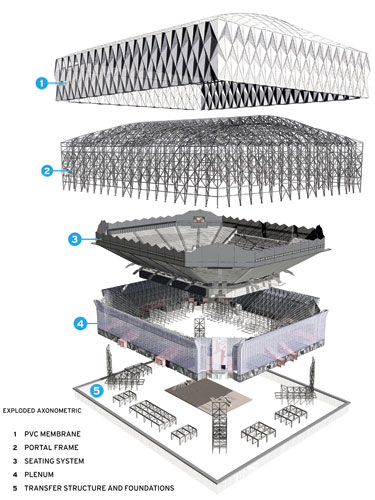
Session 6 From Deconstruction to the Bilbao Effect
Primary Texts
Wigley, Mark. “Deconstructivist Architecture,” in Deconstructivist Architecture (New York: MoMA, 1988), 10–20.
McLeod, Mary. “Architecture and Politics in the Reagan Era: From Postmodernism to Deconstructivism” (1989). (reprinted in Architecture Theory since 1968)
Derrida, Jacques. “Point de Folie: Maintenant l’Architecture: Bernard Tschumi: La Casa Vide,” AA Files (Summer 1986) (reprinted in Architecture Theory since 1968)
Tschumi, Bernard. “Disjunctions.” In Architecture and Disjunction (New York: MIT Press, 1994).
Ockman, Joan. “New Politics of the Spectacle: ‘Bilbao’ and the Global Imagination. In Architecture and Tourism (New York: Berg, 2004).
Gehry, Frank. Excerpt from Gehry Talks (New York: Rizzoli, 1999).
Prix, Wolf. “An Architectural Design Interview.” Architectural Design 94 (1991).
Further Reading
Speaks, Michael. “Negotiating the Hypertext: Bernard Tschumi’s La Villette.” Context and Modernity. Papers from the Delft International Working Seminar on Critical Regionalism, 12-15 June 1990.
Wigley, Mark. “The Translation of Architecture, the Production of Babel” (1988). (reprinted in Architecture Theory since 1968)
Rybczynski, Witold. “The Bilbao Effect.” The Atlantic Monthly 290, no. 2 (September 2002): 138–142.
Projects
Frank Gehry, Gehry House, Santa Monica, California (1978–79)
Frank Gehry, Fish Restaurant, Kobe, Japan
Frank Gehry, Loyola Law School, Los Angeles, California (1981¬–84)
Frank Gehry, Guggenheim Museum, Bilbao, Spain (1997)
Bernard Tschumi, Parc de la Villette (1982–85)
Bernard Tschumi, Le Fresnoy, Tourcoing (1990)
Zaha Hadid, The Peak Club, Hong Kong (1982)
Zaha Hadid, Cardiff Bay Opera House, Cardiff, Wales (1994–96)
Peter Eisenman, Aronoff Center (1988–96)
Peter Eisenman, Wexner Center (1983–89)
Daniel Libeskind, Chamber Works (1983)
Daniel Libeskind, Jewish Extension to the German Museum, Berlin
Coop Himmelb(l)au, UFA Cinema Center, Dresden (1993–98)
Coop Himmelb(l)au, Attic Conversion, Vienna (1984–88)
OMA, Rem Koolhaas, Zeebrugger Terminal (1986)
OMA, Rem Koolhaas, National Library, Paris (1989)
Events
“Deconstructivist Architecture” exhibition at MoMA, 1988。
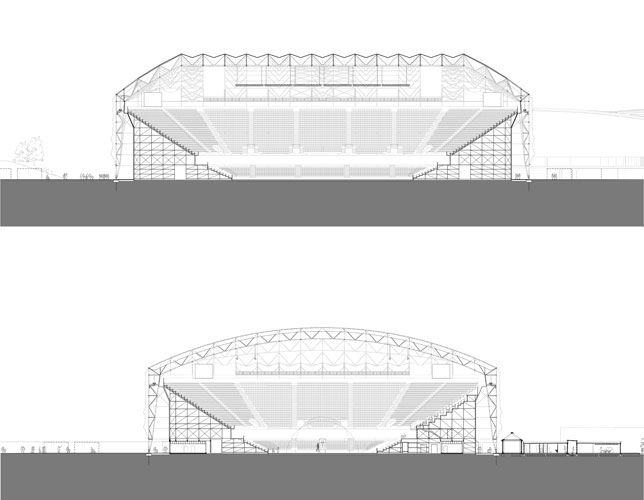
Session 7 Ideological or Ecological Envelopes
Primary Texts
Baudrillard, Jean. “The Beaubourg-Effect: Implosion and Deterrence,” trans. R. Krauss, A. Michelson. October 20 (Spring 1982): 3–13. (reprinted in Rethinking Architecture, ed Neil Leach [London: Routledge, 1997])
Davies, Colin. “Introduction.” High-Tech Architecture (New York: Rizzoli, 1988).
+ article from Supermodernism?
Further Reading
Martin, Reinhold. “Atrocities, Or, Curtain Wall as Mass Medium.” Perspecta 32 (2001): 66–75.
Nordenson, Guy. “Tall Building as Metaphor.” Tall Buildings (New York: Museum of Modern Art, 2003).
Marras, Amerigo, ed. Eco-Tec: Architecture of the In-between (New York: Princeton Architectural Press, 1999) [essays by Guatarri, De Landa, Wigley, Mark Dery]
McDonough, William. “The Hannover Principles” (1992). (reprinted in Theorizing a New Agenda for Architecture)
Yeang, Ken. The Green Skyscraper (Munich: Prestel, 2000)
Projects
Norman Foster, Sainsbury Center, Norwich, England (1975–78)
Norman Foster, Willis Faber Dumas, Ltd. Head Office, Ipswich, England (1972¬–75)
Norman Foster, City Hall, London (2002)
Norman Foster, Swiss Re, London (2004)
Norman Foster, HSBC Bank, Hong Kong (1986)
Richard Rogers, Lloyds Building, London, England (1984)
Jean Nouvel, Galeries Lafayette
Jean Nouvel, Institut du Monde Arabe, Paris, France (1984–87)
Jean Nouvel, Cartier Foundation for Contemporary Art, Paris (1994)
Bernard Tschumi, Concert Hall, Rouen (1996)
Bernard Tschumi, Glass Video Gallery (1990)
Toyo Ito, Sendai Mediatheque (1995–2001)
Toyo Ito, Tower of Winds (1986)
Toyo Ito, White U (1976)
Norman Foster, Commerzbank Frankfurt (1992–97)
Norman Foster, Ventiform (2001)
Future Systems, Green Building (1990)
Francois Roche, Pavilion in Thailand (2004)
Francois Roche, Barak House (2003)
Duncan Lewis, Vacation house, Jupilles, France
Duncan Lewis, extension to an elementary school, Thais, France
Nicholas Grimshaw & Partners, Eden Project, Cornwall, England (2002)
Michael Sorkin, East River project
Ross Lovegrove, Solar Seed
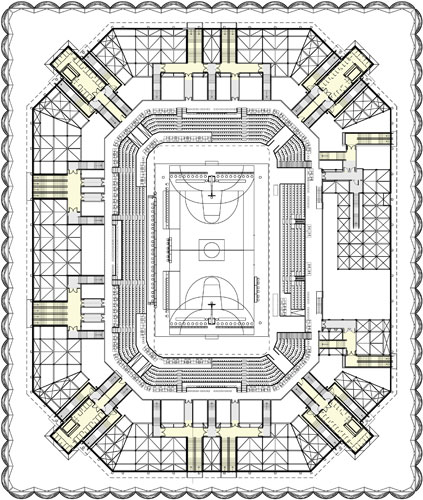
Session 8 Minimalism: Archaic Modern Swissness
Primary Texts
Ursprung, Philip. “Minimalism and Minimal Art.” In Minimal Architecture (Munich: Prestel, 2003).
Frampton, Kenneth. “Minimum Moralia: Reflections on Swiss German Production.” In Labour, Work, and Architecture (London: Phaidon, 2002).
Ruby, Ilka and Andreas. “Essential, Meta-, Trans-. The Chimeras of Minimalist Architecture.” In Minimal Architecture (Munich: Prestel, 2003).
Alejandro Zaera-Polo, “Continuities” (interview with Jacques Herzog) and “Herzog and de Meuron [Between the Face and the Landscape].” El Croquis 60+84 (2000).
Further Reading
Gerhard Mack, Herzog and de Meuron: The Complete Works, volumes 1-3 (Basel: Birkhauser Verlag, 1996–).
Projects
Peter Zumthor, Thermal Baths at Vals (1986¬–96)
Peter Zumthor, Kunsthaus Bergenz, Bergenz, Austria (1994–97)
Herzog and de Meuron, Ricola Factory and Storage Building, Mulhouse-Brunnstatt, France (1992–93)
Herzog and de Meuron, Signal Box, Basel (1995)
Herzog and de Meuron, Dominus Winery, Yountville, California (1995–97)
Herzog and de Meuron, Rehab Basel, Basel (1998–2001)
Herzog and de Meuron, Goetz Collection, Munich (1992)
Herzog and de Meuron, Tate Modern (1995–2000)
Herzog and de Meuron, Laban Dance Center (2003)
Herzog and de Meuron, Prada Store, Tokyo (2000¬– )
Luigi Snozzi, Guidotti House, Monte Carasso (1984)
Gigon and Guyer, Museum Liner Appenzell (1996–98)
Gigon and Guyer, Kirchner Museum, Davos, Switzerland (1989–92)

Session 9 Maximalism: Programmatic Dutchness
Primary Texts
Koolhaas, Rem. “Bigness, or the Problem of Large.” In SMLXL (New York: The Monacelli Press, 1995).
Koolhaas, Rem. “The Generic City.” In SMLXL (New York: The Monacelli Press, 1995).
Lootsma, Bart. “The Second Modernity of Dutch Architecture.” In Superdutch: New Architecture in the Netherlands (London: Thames and Hudson, 2000).
Allen, Stan. “Artificial Ecologies: The Work of MVRDV.” El Croquis 86 (1998): 26-33.
Lootsma, Bart. “Towards a Reflexive Architecture.” El Croquis 86 (1998): 34–42.
Maas, Winy. “Toward an Urbanistic Architecture.” In The State of Architecture at the Beginning of the 21st Century, ed. Bernard Tschumi and Irene Cheng (New York: The Monacelli Press, 2003).
Bos, Caroline and Ben van Berkel. Excerpts from Move (Amsterdam: UN Studio and Goose Press, 1999).
Further Reading
Stan Allen, “Artificial Ecologies: The Work of MVRDV,” in El Croquis 86 (1997): 26–33.
Peter Buchanan, “Netherlands Now.” Architecture + Urbanism 336 (1998): 4-22.
Koolhaas, Rem. The Harvard Design School Guide to Shopping (2001).
Koolhaas, Rem. Great Leap Forward (2001).
Maas, Winy. Metacity/Datatown
van Berkel, Ben. “How Modern is Dutch Architecture.” Delinquent Visionaries (Rotterdam: Netherlands Architecture Institute, 1996).
van Berkel, Ben. “Basically (for now) Three Topics.” Anyhow, ed. Cynthia Davidson (Cambridge, MA: MIT Press, 1998).
Projects
MVRDV, Dutch Pavilion, World Expo 2000 (1997–2000)
MVRDV, Villa VPRO (1993–97)
MVRDV, Wozoco Housing (1997)
MVRDV, 284 Houses in Berlin-Prenzlauerberg, Germany (1991)
OMA, Dutch House, Holland (1992–94)
OMA, IIT (1998–2004)
OMA, Seattle Public Library (2005)
OMA, Euralille (1989¬–1995)
OMA, Hotel and Convention Centre in Agadir (1990)
OMA, Jussieu Library
OMA, Casa da Musica, Porto, Portugal (2001)
Wiel Arets, Academy of Arts and Architcture, Maastricht, The Netherlands (1989–93)
UN Studio, Mobius House (1993–98)
UN Studio, Erasmus Bridge (1990–96)
UN Studio, UCP Mainport, Utrecht (1997)
UN Studio, Diocesan Museum, Cologne, Germany (1996)
UN Studio, ACOM Office Building, Amersfoort, the Netherlands (1993)
Mecanoo, Delft Technical University Library (1993–98)

Session 10 2001: From Postcriticality to Utopian Realism
Context
9/11
Digital revolution
Internet bubble
Primary Texts
Somol, Robert and Sarah Whiting. “Notes Around the Doppler Effect and Other Moods of Modernism.” Perspecta 33 (2002):72–77.
Martin, Reinhold. “Critical of What? Toward a Utopian Realism.” Harvard Design Review (2005).
Speaks, Michael. “Design Intelligence and the New Economy.” Architectural Record (January 2002): 72–76.
Lynn, Greg. “Animate Form.” In Animate Form (New York: Princeton Architectural Press, 1999)
Tafuri, Manfredo. Architecture and Utopia (Cambridge, MIT Press, 1976). (excerpts)
Hickey, Dave.”Dialectical Utopias: On Santa Fe and Las Vegas.” Harvard Design Magazine (Winter/Spring 1998).
Zaera-Polo, Alejandro. ”A Scientific Autobiography.” Harvard Design Review (Fall 2004/Winter 2005): 5–15.
Further Reading
Lavin, Sylvia. “Essay: The Uses and Abuses of Theory,” Progressive Architecture 71, no. 8 (August 1990): 113-114, 179.
Kipnis, Jeffrey. “Rebuttal: Theory Used and Abused,” in Progressive Architecture 71, no. 11 (November 1990): 98-99,158.
Hays, K. Michael. “Rebuttal: Theory as a Mediating Practice,” in Progressive Architecture 71, no. 11 (November 1990): 98-100, 158.
Baird, George “Criticality and Its Discontents.” Harvard Design Review (Fall 2004/Winter 2005): 16–21.
“Nine Questions about the Present and Future of Design.” Harvard Design Magazine (Spring/Summer 2004): 5–52.
Speaks, Michael. “After Theory.” Architectural Record (June 2005): 73–75.
Speaks, Michael. “Design Intelligence: Or Thinking After the End of Metaphysics.” Architectural Design 72, no. 5 (September/October 2002): 4–6.
Projects
United Studio, Proposal for the World Trade Center site (2003)
Greg Lynn, Blobs
Kolatan and MacDonald, Housings
Asymptote, Virtual New York Stock Exchange
FOA, Yokohama Port Terminal, Yokohama, Japan (1996)
SHoP, Study for the School of the Arts, Columbia University, New York
